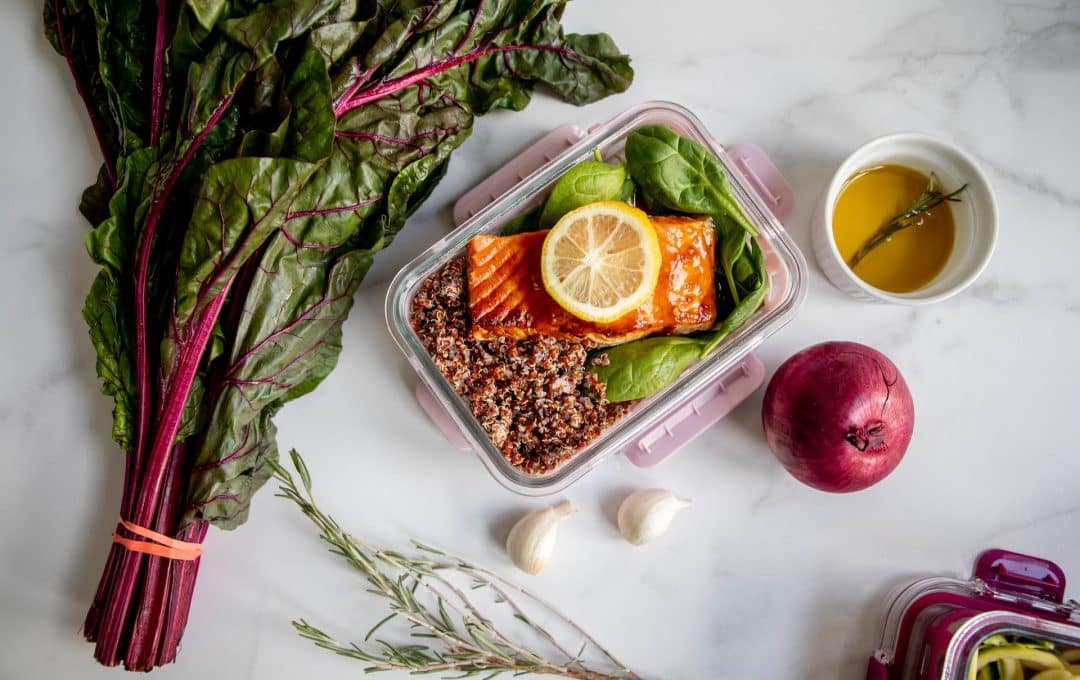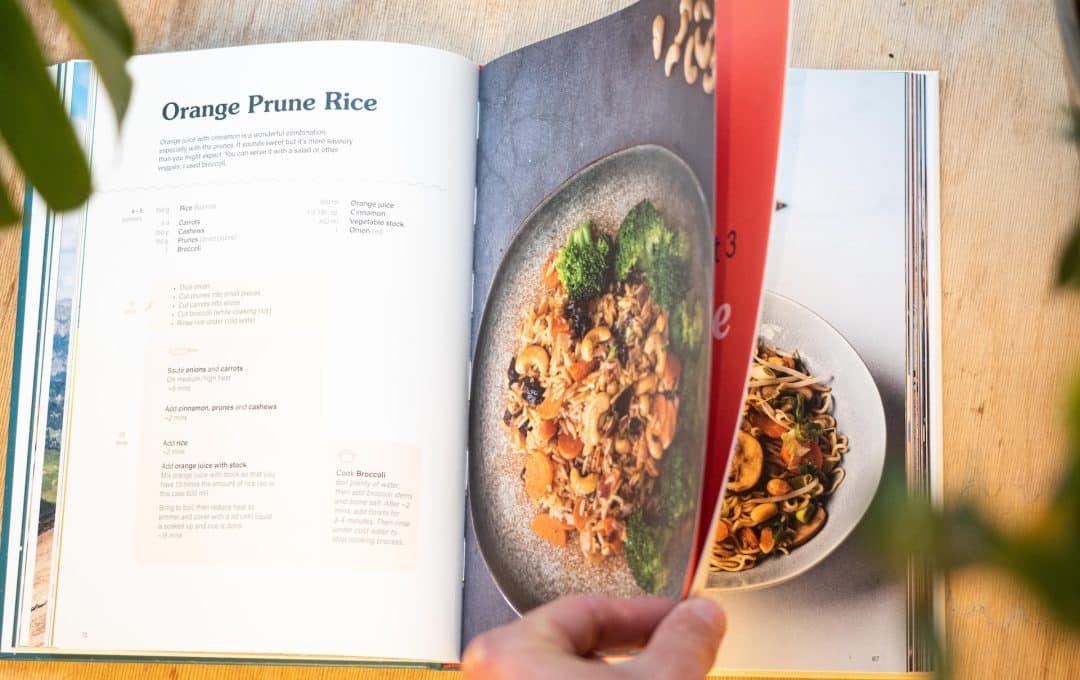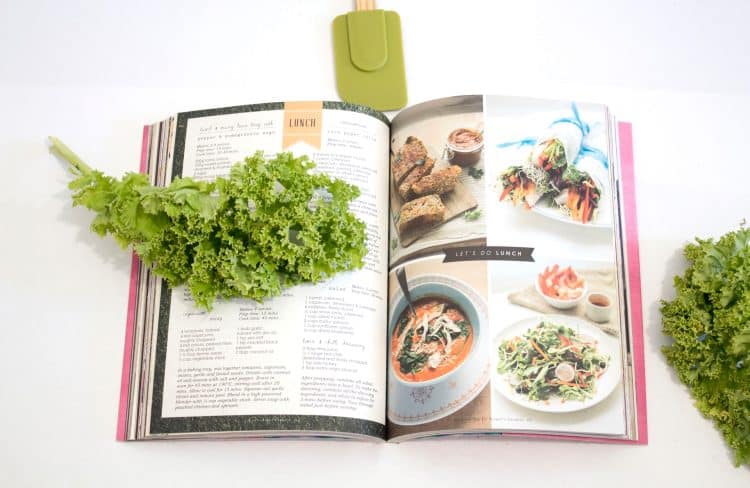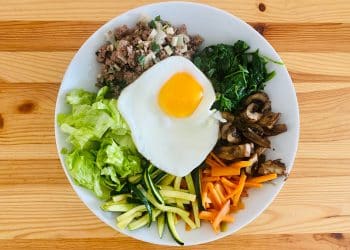The concept of one meal a day (OMAD) is gaining popularity because it promotes weight loss, improves digestion, and simplifies meal planning. Although eating only one meal a day may seem daunting, there are many delicious and satisfying recipes a practitioner can enjoy as part of this diet. So, let’s look at one-meal-a-day recipes that can help you achieve your health goals while satisfying your taste buds.
The best and easiest one-meal-a-day recipes contain all necessary nutrients, macronutrients, and important vitamins and minerals, are delicious and filling, and are easy to prepare and make in advance. Sticking to recipes like these improves the chances of sticking to and enjoying this diet.
Table of contents
- What Is One Meal A Day (OMAD), And How Does It Work?
- Benefits Of Eating One Meal A Day
- How To Plan Your One Meal A Day
- Tips For Preparing Your One Meal A Day
- Macronutrients And Their Importance In One-Meal-A-Day Recipes
- One-Meal-A-Day Recipe Ideas For Breakfast, Lunch, And Dinner
- One-Meal-A-Day Tips For Busy Individuals
- Frequently Asked Questions About One-Meal-A-Day Intermittent Fasting
- Conclusion: The Best And Easiest One-Meal-A-Day Recipes
What Is One Meal A Day (OMAD), And How Does It Work?
One Meal a Day (OMAD) is a type of intermittent fasting involving consuming only one meal per day during a specific time window. This is a kind of time-restricted feeding. The idea behind OMAD is to restrict calorie consumption to a specific time period during the day. OMAD has various pros and cons, and I have to mention that it’s not for everyone. It’s essential to speak to your healthcare professional before attempting this eating pattern.
Benefits Of Eating One Meal A Day

Studies have shown that intermittent fasting, including the OMAD diet, can have various health benefits, such as promoting weight loss, reducing inflammation, and improving heart health. A study published in the International Journal of Obesity found that consuming only one meal per day resulted in greater weight loss and improved metabolic flexibility when compared to eating three meals per day.
OMAD may also reduce the risk of certain chronic diseases, yet human studies are scarce, and most results are seen in mouse models or anecdotal reports. The current underlying problem is the overconsumption of calories that leads to chronic diseases.
An additional benefit of eating one meal a day is having fewer meals to prepare, saving you on time. Due to this, it’s also easier to plan meals around how many calories you’d like to intake daily. You won’t have to spend much time in the kitchen or thinking about the food either.
In addition, if you consistently forget to eat, OMAD could fit into your busy work/life schedule. One meal a day could lessen your cooking time, make meal prep more manageable, and help you with your shopping budget.
How To Plan Your One Meal A Day
If you’re new to the OMAD diet, adjusting to eating only one meal per day may take some time. Start by gradually reducing the number of meals you consume per day and increasing the size of your OMAD meal. It’s also important to listen to your body and adjust your eating pattern as needed.
Meal Timing And Content
Two important points to consider for a one-meal-a-day plan are the timing and content of the meal. Some people prefer to consume their meal at dinner, while others choose breakfast or lunch. Choosing a time that works best for your schedule and lifestyle is important.
If you prefer to have your meal in the evening, eat at least a few hours before going to bed to allow your body enough time to digest the food. Eating too late can negatively affect your blood glucose response.
When deciding on the content of your meal, aim to include healthy, whole foods that are rich in nutrients and low in calories. This includes lean protein, vegetables, fruits, and whole grains. Make sure to choose foods you enjoy eating to make the diet sustainable and enjoyable.
Hydration
To ensure you stay hydrated throughout the day, it’s important to drink plenty of water. You can also have other calorie-free beverages during your fasting window, such as tea or black coffee.
Tips For Preparing Your One Meal A Day

Consider meal prepping for the week ahead to make the preparation process easier. This can help save time and ensure you have healthy, nutritious meals ready to go. When cooking your OMAD meal, focus on healthy cooking methods, such as grilling, baking, or steaming.
Here are some additional tips for planning and preparing your OMAD meal.
Make A Grocery List
Before heading to the store, make a list of the foods you need for your OMAD meal. This can help you stay on track and avoid impulse purchases.
Meal Prep
Consider meal prepping for the week ahead to save time and ensure you have healthy, nutritious meals ready to go. This can include preparing ingredients, cooking meals, and portioning out servings.
Focus On Healthy Cooking Methods
When cooking your OMAD meal, focus on healthy cooking methods, such as grilling, baking, or steaming. Avoid adding excess salt, sugar, or unhealthy fats to your meals.
Use Herbs And Spices
Use herbs and spices instead of excess salt or sugar to add flavor to your meals. This can include herbs like basil, cilantro, or rosemary, and spices like cumin, paprika, or turmeric.
Don’t Skip Meals
Even though you’re only eating one meal per day, it’s important not to skip meals. This can lead to overeating and may negatively impact your metabolism.
Macronutrients And Their Importance In One-Meal-A-Day Recipes
Macronutrients are the main nutrients that provide energy to the body. They are required in large amounts. The three macronutrients are carbohydrates, proteins, and fats. Each of these macronutrients plays a special role in the body. This is what they do for you.
Protein
Proteins are the body’s building blocks and are essential for the growth and repair of tissues. They also play a role in hormone production and immune function. Good protein sources include meat, fish, poultry, beans, lentils, tofu, and dairy products.
Carbohydrates
Carbohydrates are the primary source of energy for the body. They are broken down into glucose and fuel the brain and muscles. Good sources of carbohydrates include fruits, vegetables, whole grains, and legumes.
Fats
Fats are important for providing energy, insulating and protecting organs, and aiding in absorbing fat-soluble vitamins. Good sources of healthy fats include nuts, seeds, avocados, olive oil, and fatty fish.
How To Balance Macronutrients In One-Meal-A-Day Recipes

When planning a meal, it’s important to include a balance of all three macronutrients. Hand portions can be a useful tool in helping design a balanced meal that is appropriate for an individual’s needs.
The hand portion method involves using the size of your hand to estimate appropriate portion sizes for each macronutrient.
Here’s how it works.
Protein
Aim for a portion of protein roughly the size of the palm of your hand, or about 3-4 ounces.
Carbohydrates
Aim for a portion of carbohydrates roughly the size of your cupped hand, or about 1 cup.
Fats
Aim for a portion of healthy fats roughly the size of your thumb, or about 1-2 tablespoons.
Of course, this method could be better and may need to be adjusted based on individual needs, but it can be a helpful starting point for creating a balanced meal.
One-Meal-A-Day Recipe Ideas For Breakfast, Lunch, And Dinner
When following the OMAD diet, the timing and content of the meal can vary based on personal preference. Some people prefer to consume their meal at dinner, while others choose breakfast or lunch.
In general, follow the macronutrient approach above when preparing your meals to consume enough calories. Meals such as omelets, wraps, sandwiches, grilled meat or fish, yogurt, and cereal should be accompanied by a few servings of vegetables that are cooked anyway and some fruit. I always like to have “treats” like chocolate on my plate to avoid later cravings or binge eating. Your goal is to have a complete meal.
Here are some ideas for one-meal-a-day recipes for breakfast, lunch, or dinner. You will see omnivore and plant-based recipes below.
One-Meal-A-Day Recipes For Omnivores
If you’re looking for a mix of meats, vegetables, and other ingredients, the below list of OMAD recipes will hit the spot.
One-Pan Chicken And Vegetables
Season chicken breasts with your favorite spices and bake them with various vegetables, such as broccoli, carrots, and sweet potatoes.
Beef And Broccoli Stir Fry
Cook beef strips in a wok with garlic and ginger, then add in broccoli and a stir-fry sauce. Serve with rice or noodles.
Black Bean And Sweet Potato Chili
Cook onions, garlic, and bell peppers in a pot, then add black beans, tomatoes, and sweet potatoes. Season with chili powder and cumin, and let simmer until the sweet potatoes are cooked through.
Greek Salad With Grilled Chicken
Toss together mixed greens, cherry tomatoes, cucumbers, feta cheese, and olives. Top with grilled chicken and a simple vinaigrette.
Shrimp And Avocado Salad
Grill or sauté shrimp until cooked through, then mix with diced avocado, tomatoes, and red onion. Serve over mixed greens with a citrusy dressing.
One-Meal-A-Day Plant-Based Recipes
Not everyone wants to eat meat. For those who don’t, the below recipe options will provide tasty possibilities.
Vegan Buddha Bowl
This is a simple and delicious meal that includes a variety of plant-based foods. Combine cooked quinoa, roasted sweet potato, sautéed kale, avocado, chickpeas, and a drizzle of tahini dressing in a bowl.
Lentil And Vegetable Curry
This hearty and flavorful curry is perfect for a satisfying OMAD meal. Cook lentils in a curry sauce with mixed vegetables like carrots, cauliflower, and bell peppers. Serve over brown rice or quinoa.
Vegan Chili
This protein-packed chili is made with various beans, vegetables, and spices. Sauté onions, garlic, and bell peppers in a pot, then add in canned tomatoes, vegetable broth, and a mix of kidney, black, and pinto beans. Season with chili powder, cumin, and paprika, and let simmer until flavors are melded.
Vegan Power Bowl
This is another nourishing and balanced meal that includes a variety of plant-based foods. Combine cooked farro, roasted Brussels sprouts, sautéed spinach, roasted chickpeas, and a drizzle of lemon-tahini dressing in a bowl.
Vegan Burrito Bowl
This flavorful and filling meal is perfect for a vegan OMAD. Combine cooked brown rice, black beans, sautéed bell peppers, onions, avocado, and salsa in a bowl. Top with a dollop of vegan sour cream or a sprinkle of vegan cheese.
One-Meal-A-Day Recipes For The Breakfast Lovers
For those who love breakfast, these recipes are for you. Below you’ll find various breakfast options that will suit the kind of breakfast you desire.
Classic American Breakfast
This hearty breakfast includes scrambled eggs, bacon, toast, and hash browns. You can also add a side of sliced avocado or fresh fruit for some added nutrition.
Breakfast Burrito
This portable and flavorful breakfast option includes scrambled eggs, breakfast sausage or bacon, cheese, and salsa all wrapped up in a tortilla. You can also add in some diced tomatoes, onions, or peppers for extra veggies.
Greek Yogurt Parfait
This quick and easy breakfast can be made with Greek yogurt, mixed berries, and granola. Simply layer the ingredients in a bowl or jar for a delicious and balanced breakfast.
Omelet
A fluffy and flavorful omelet is a great way to start your day. You can fill it with veggies, cheese, and protein, such as ham or bacon. Serve with a side of whole-grain toast or fresh fruit.
One-Meal-A-Day Tips For Busy Individuals
For busy individuals, meal prepping is vital to staying on track with the OMAD diet. Consider preparing your meals for the week ahead on the weekend or a day off. Portable, easy-to-eat options, such as salads, wraps, and smoothies, can also be great for busy days. Nowadays, there are so many readymade options in your local supermarket. What you are looking for is good protein sources, some vegetables and a carb like rice, potato, a wrap, etc. Then you’ll want to pair this with fresh fruit, yogurt, and enough calories to keep you going throughout the day.
Frequently Asked Questions About One-Meal-A-Day Intermittent Fasting
Starting a one-meal-a-day program can feel daunting. Knowing as much information as possible about the diet is vital to feeling comfortable and successful. So, if you have the following questions as you contemplate this diet, these are the answers.
Is It Safe To Eat Only One Meal Per Day?
Eating one meal daily can be safe for most healthy individuals. However, it may not be appropriate for everyone, such as pregnant or breastfeeding women, individuals with a history of disordered eating, or those with certain medical conditions. It’s essential to consult with a healthcare professional before starting any new diet.
Can I Have Snacks During My Fasting Window?
It depends on the specific OMAD diet you’re following. Some versions of the diet allow for one or two snacks in addition to the one meal. In contrast, others recommend consuming only water or other calorie-free beverages during the fasting window. It will depend on what works best for you and what your doctor recommends.
Conclusion: The Best And Easiest One-Meal-A-Day Recipes
The OMAD diet is a type of intermittent fasting that involves consuming only one meal per day during a specific window of time. This eating pattern can lead to weight loss and has various health benefits, such as improving heart health and reducing inflammation. To plan your OMAD meal, choose healthy, whole foods that are rich in nutrients and low in calories. Consider meal prepping for the week ahead and focus on healthy cooking methods. With the proper planning and preparation, you can enjoy delicious and easy one-meal-a-day recipes.
So, are you considering a one-meal-a-day fast? What recipes do you plan to use? Let us know in the comments below!








